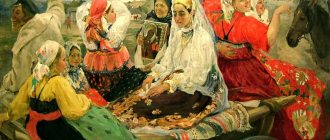History of the wedding veil
The history of the veil, this integral accessory of the bride and decoration of the wedding dress, originates in the rituals and religious ceremonies of ancient times. If today a veil is a coquettishly transparent fabric that does not hide the bride’s face, then in ancient times the role of a wedding
The history of the veil, this integral accessory of the bride and decoration of the wedding dress, originates in the rituals and religious ceremonies of ancient times. If today a veil is a coquettishly transparent fabric that does not hide the bride’s face, then in ancient times the role of a wedding veil was played by an opaque veil that hid the bride completely, from head to toe. The tradition of wrapping the bride in such a veil appeared in ancient Greece and Rome: it was believed that the veil would protect the bride from the unkind glances of envious people, the evil eye and damage. However, in ancient times, the veil was not yet white: Greek women hid their faces under a yellow fabric, and Roman brides wore a bright red veil or decorated their hair with multi-colored fabrics with embroidery.
Today, a wedding veil must match the color of the wedding dress - which means it is most often white or a light shade of ivory. Opaque fabrics were replaced by translucent tulle and lace, which no longer hid the bride’s face, but, on the contrary, emphasized her beauty and some mystery.
In the 15th century, the Crusades brought several Eastern traditions to medieval Europe. Among them was a wedding veil; If Muslim women had to wear a burqa even after marriage, hiding their beauty, then in Europe the veil quickly acquired a different meaning, becoming a symbol of modesty and purity. A delicate white veil symbolized the purity and innocence of a girl getting married - and to some extent retains this meaning to this day: that is why only women getting married for the first time today wear a wedding veil. Another symbolic meaning of a wedding veil in ancient times was a sign of belonging to the husband’s clan. It was believed that after the groom removes the bride’s veil, he takes her under his protection - and from that moment on, a married woman takes the place of the girl. That is why the veil was originally long and reached to the heels, symbolizing the subordination of a woman to a man - and today its length can vary from a traditionally long veil to a short veil. Today, the bride often removes her veil herself, which indicates equality with the man. In ancient times, such a gesture could be considered as a symbol of the bride’s disobedience to her newfound family - her husband and mother-in-law.
Another custom that explains the appearance of the wedding veil is the tradition of marriage as an agreement between the groom and the bride’s parents. The future husband could see the face of his chosen one only after the wedding - and the bride’s face was covered with a long opaque veil so that the groom would not change his mind about getting married at the last moment after seeing the appearance of his future wife.
By the middle of the 20th century, the veil turned from long and fluffy into a small veil, sometimes covering only the bride’s eyes. This was explained by the post-war era, which made women’s everyday clothing and wedding dresses much simpler and more practical. Classic fluffy wedding dresses were replaced by modest suits, with which a long veil did not go well. Therefore, instead of a traditional veil, brides chose a small translucent veil with embroidery, pinning it to a hat or simply to their hair.
The era of modesty in wedding fashion did not last long: in the nineties, the long veil returned to fashion again. True, instead of a luxurious veil made of expensive silk and tulle, modern brides often choose a more practical veil - made of nylon, which breaks much less often. The bride chooses the length of the veil according to the dress, and the longest veil today is considered to be the veil that adorned the hair of the famous American TV presenter Star Jones - its length was 8.23 meters, half a meter longer than the luxurious veil of Princess Diana. The first American bride to wear a veil was a certain Nellie Castas, the chosen one of Major Lawrence Lewis, assistant to President George Washington. Nellie did not choose the veil for any religious reasons: simply one day her future husband, seeing his chosen one behind a lace curtain, was struck by her beauty. Thus, Nellie was one of the first American women to understand how much more attractive the bride’s face can be made by such a simple detail as a veil.
Meaning of veil
When the ceremony ended, the bride's veil was removed - thus, it passed into the power of not only the husband himself. The veil was recognized as a symbol of submission, because the veil means that the girl is ready to love her husband and obey him...
Since ancient times, women have covered their heads with a scarf. This tradition exists in many countries and religions - and first of all, it symbolizes femininity, tenderness and purity of the one who wears the headscarf.
By the way, in the times of Ancient Rus', the bride was not wearing a transparent canopy with hairpins or a tiara, but a cotton scarf. He covered the face of a young girl - and this is what some fairy tales are based on, where brides managed to replace themselves with maids and escape from an unlovable groom.
In fact, everything is connected with an ancient superstition - a girl who agreed to marriage was considered formally “dead.” And in order not to bring misfortune to the new family and new life, it was impossible to look at the girl’s face.
Somewhat later, the veil was recognized as a symbol of submission. The veil covering her face was supposed to indicate that the girl was ready to love and obey her husband. In addition, in ancient times it was assumed that the scarf would protect the bride from troubles and evil spirits. Then the fabric covering the bride's head was secured with a strap or a wreath of flowers.
Yes, yes, even with such strict traditions, wedding flowers
used constantly!
And in Ancient Greece and Ancient Rome, the veil had a very original color. In Rome it is red, and in Greece it is yellow. And very long, certainly down to the toes. This also symbolized how dependent the young wife was on her close man.
To this day, a sign known in many countries has been preserved: “A long veil means a happy family life.”
When the ceremony ended, the bride's veil was removed - thus, she passed into the power of not only the husband himself, but also his parents. But there was another custom - if the girl herself took off the cloth covering her head, she was on a par with her new husband.
By the way, white color is primarily a symbol of innocence and chastity, so if this is the bride’s second marriage, then she does not need a veil.
The veil began to look the way it does now only in the mid-eighteenth century - and today there are a huge number of styles of this wedding attribute.
When choosing a veil, consider what kind of dress you will have. Of course, the simplest option will suit everyone, but if you decide to choose something original, you will have to work hard. The veil can be of any length - even very short, 10-15 centimeters, or even falling to the toes and stretching in a train.
In this case, the veil is usually carried behind the girl by little girls - her relatives or the children of friends. There are veils with red, yellow or cream ribbon, with laces, embroidery or lace. In this case, be sure to match it with your dress. So, for example, if you decide to get married “Chinese style”, in a red dress, a veil with splashes of red would be an excellent choice.
Sometimes the veil can be supplemented or even replaced with fresh flowers. They are a symbol of love and fidelity; in Greece they are considered a sign of the goddess Aphrodite. By the way, according to legend, the rose appeared from the foam that surrounded the body of the goddess.
The gods sprinkled nectar on the flower that delighted them - ever since then the rose has had such a pleasant aroma. By the way, in Greece, the bride’s hair was decorated with blades of grass, which indicated fidelity to her husband in the same way as a veil in Rus'. And in Spain, the bride’s hair is decorated with orange tree buds - recently this tradition has come to us.
Related posts:
- Do you remember how it all began?
- Unusual country wedding
- Wedding bows and boots
- Bride
- Fortune telling for love, betrothed and wedding signs
- The language of courtship
Protection from dark forces
The wedding ceremony in Rus' took place after the bride and matchmaking. On the wedding day, the bride acquired the status of a wife.
It was a kind of transition from a familiar state to a new one. In ancient times, people believed that during such periods a person becomes especially vulnerable. The girl could be envied by her less fortunate friends and put the evil eye on her. Or hire a sorcerer to cause damage. To protect the bride from her rivals, her husband’s ill-wishers and dark forces, a veil was placed on the future wife’s head. People believed that if the cape fell off, the girl would face illnesses and troubles.
The veil, which protected the bride from dark forces and ill-wishers, turned into a light, airy piece of fabric. Modern girls wear it on their heads on their wedding day.
Long-term weather forecast for March 2021 by region (works on site)
It's time to pamper yourself: we're preparing a delicious cake with berries and cream
“Spring is coming”: Nastya Kamenskikh gave advice to novice sports fans











